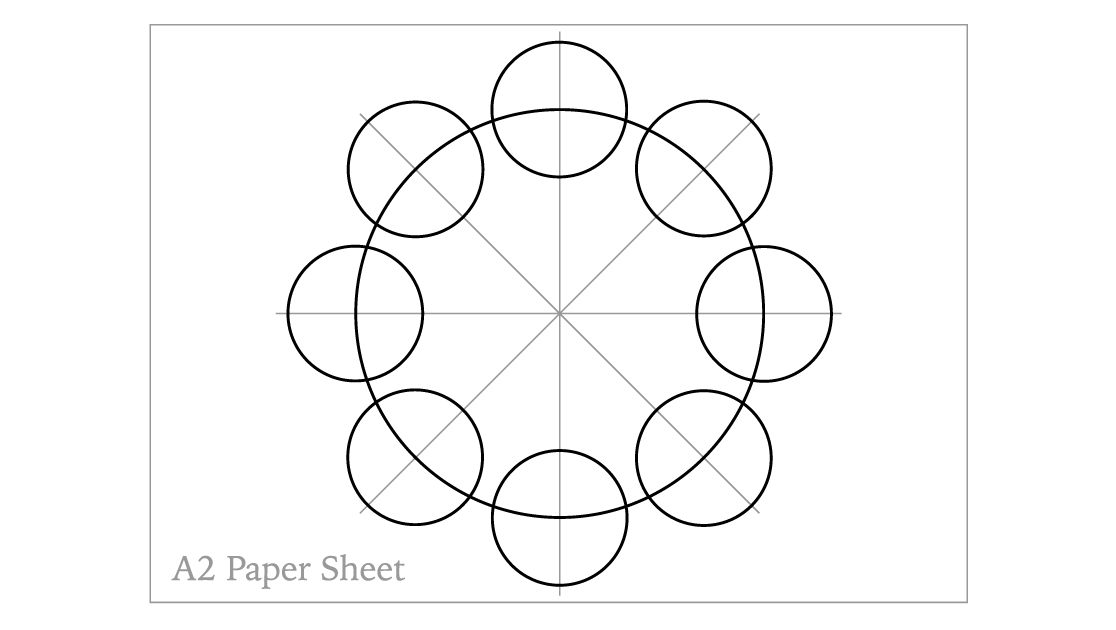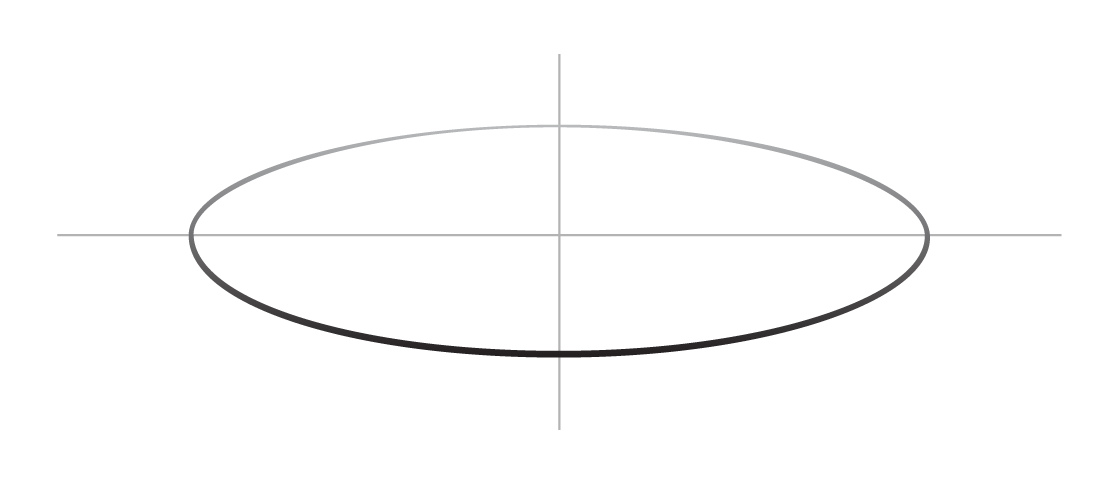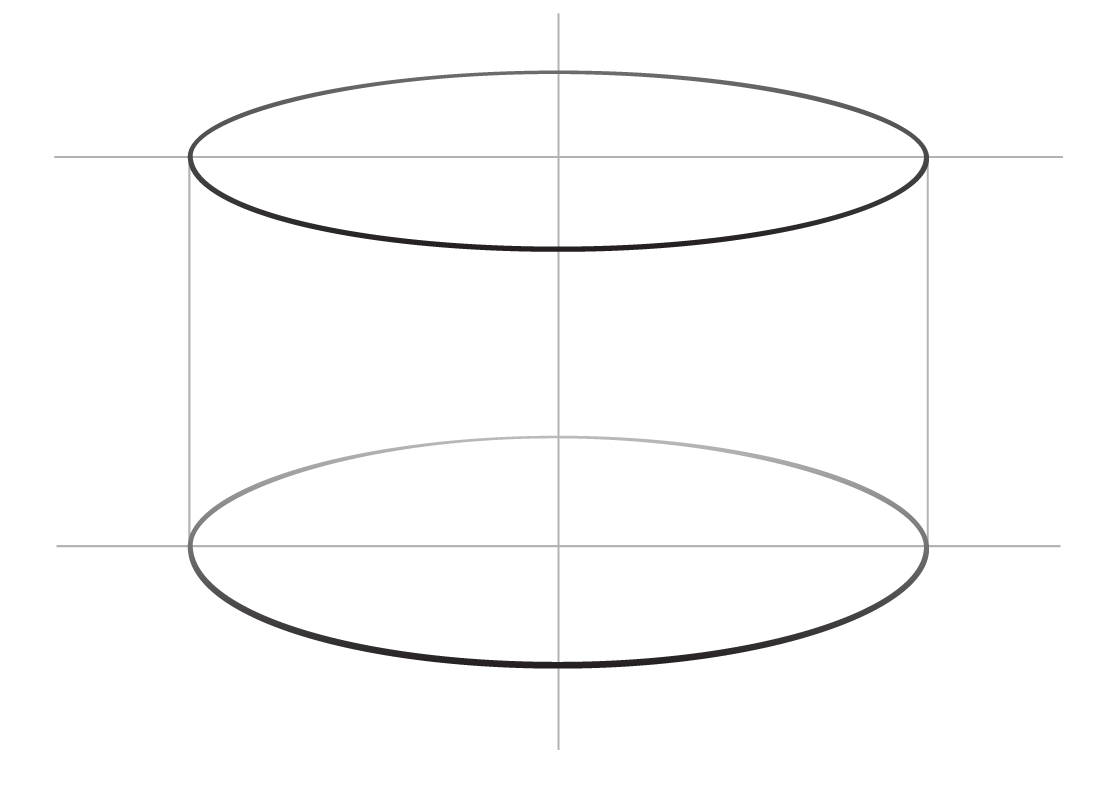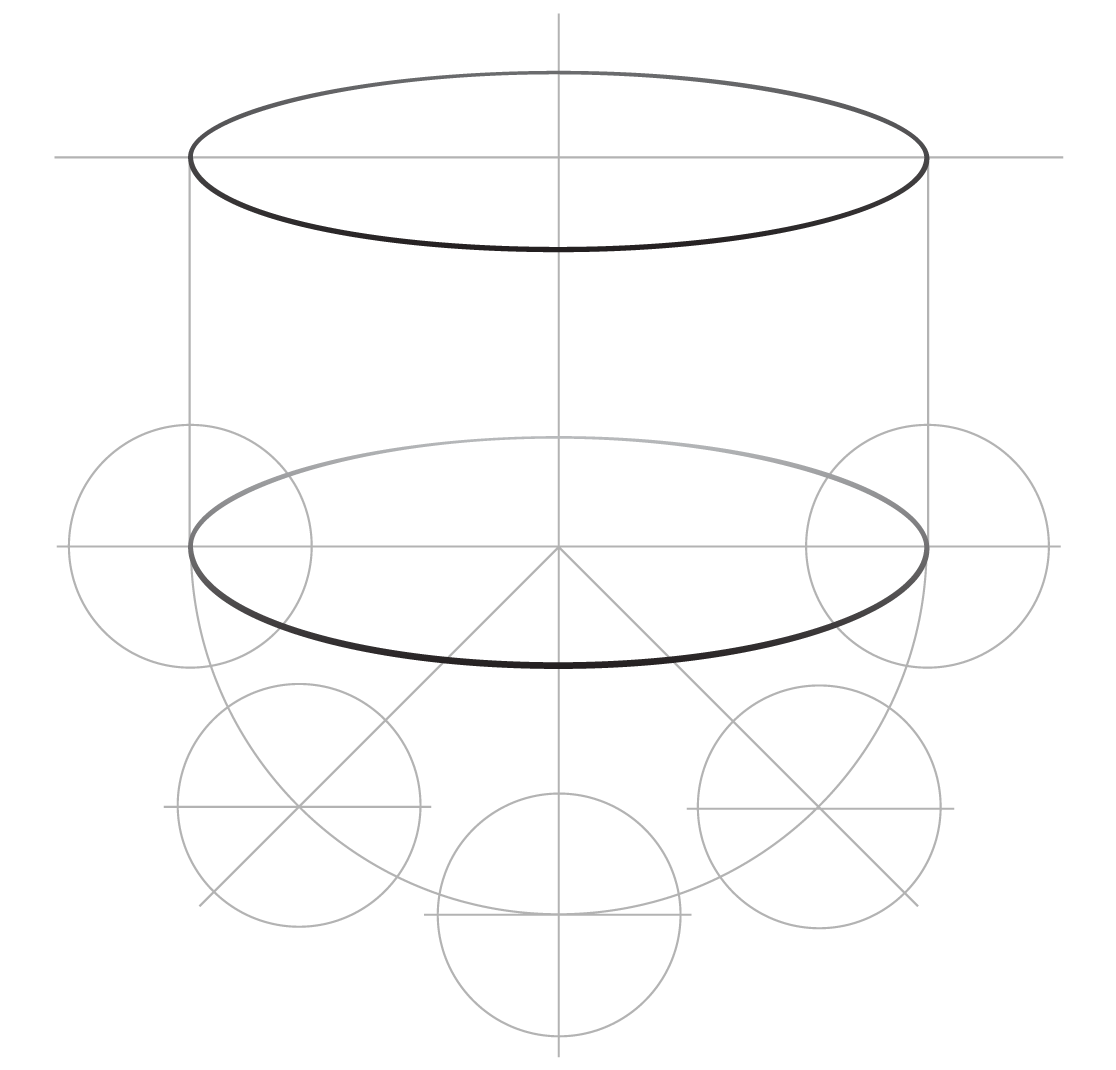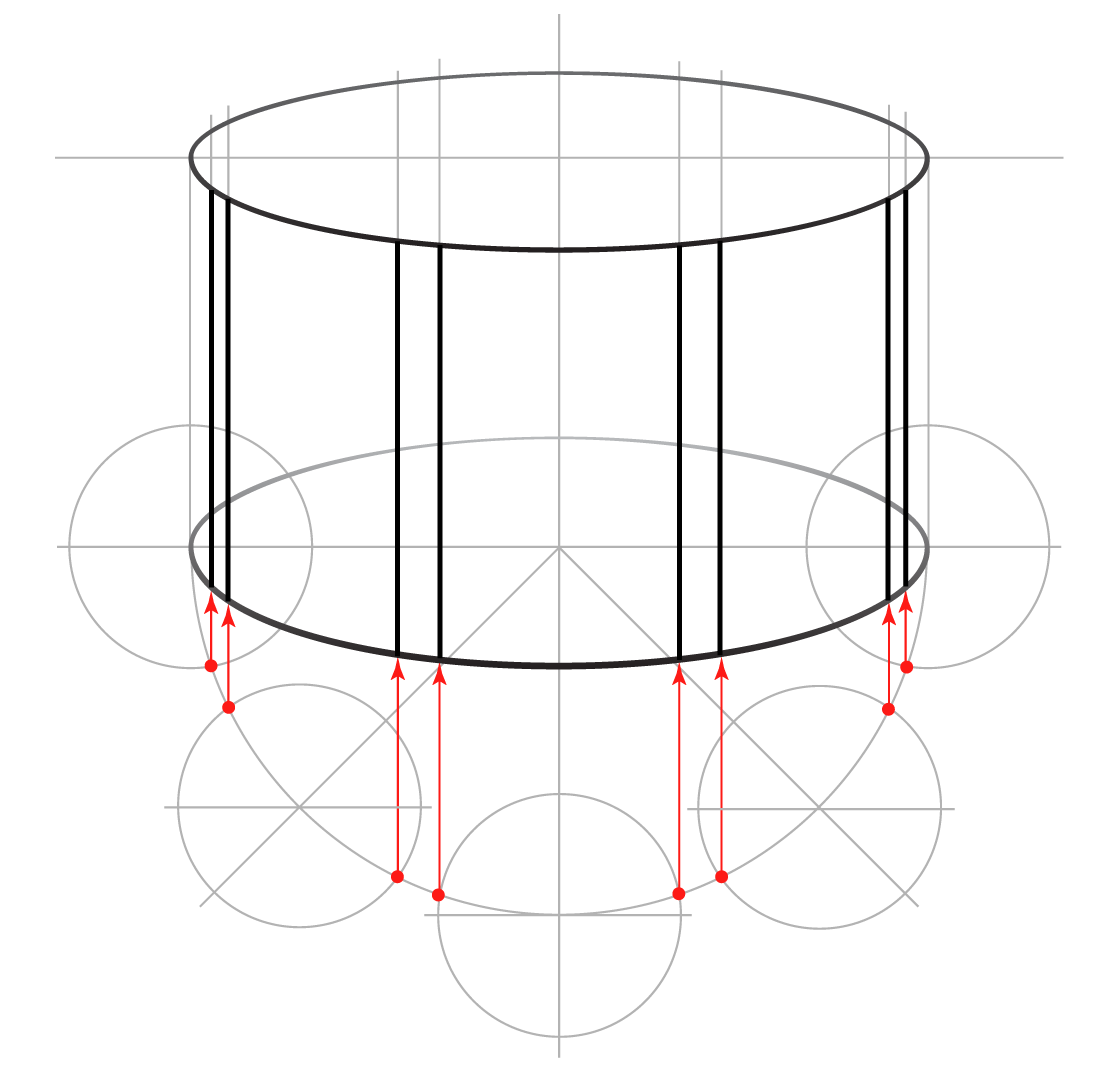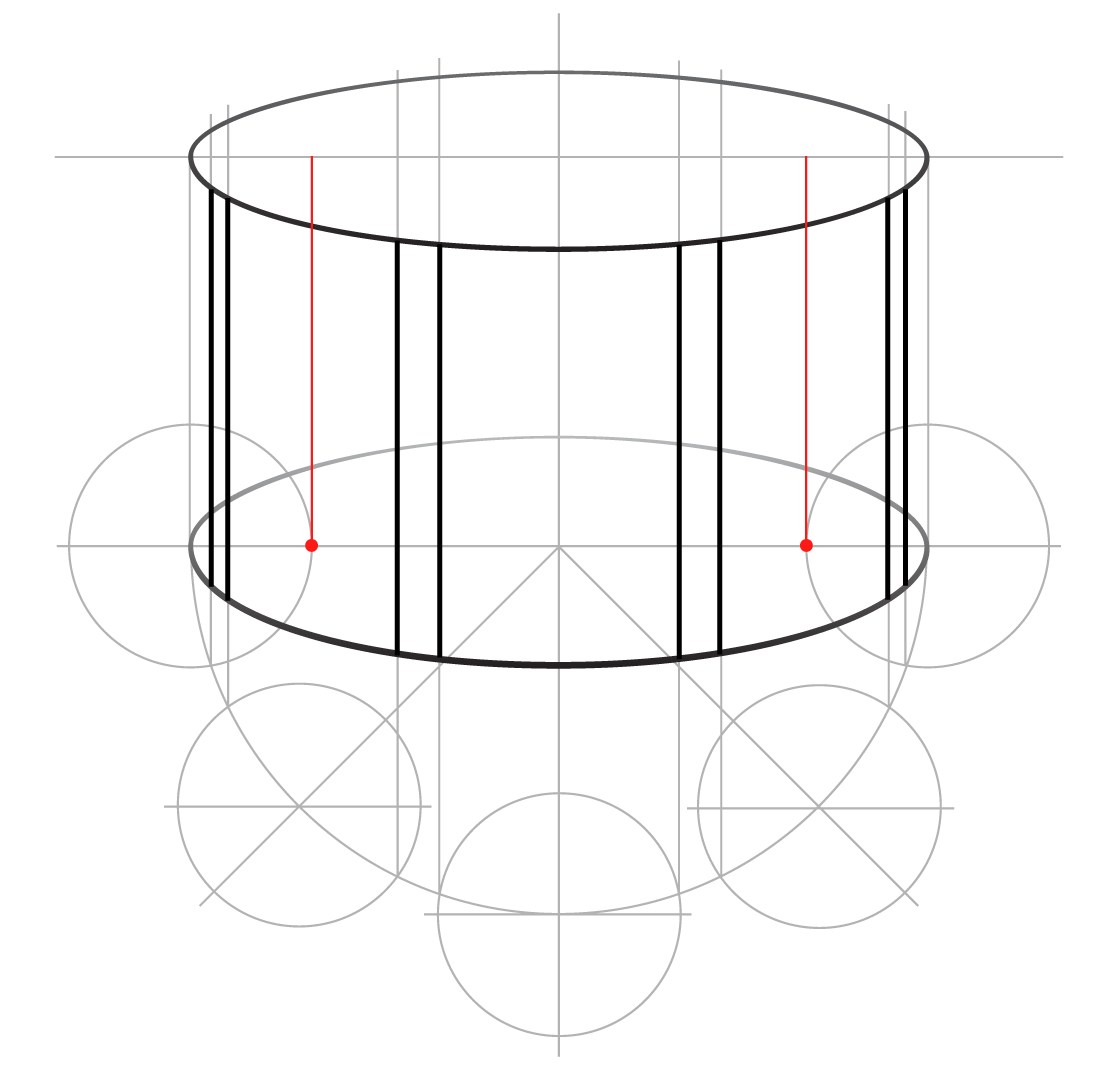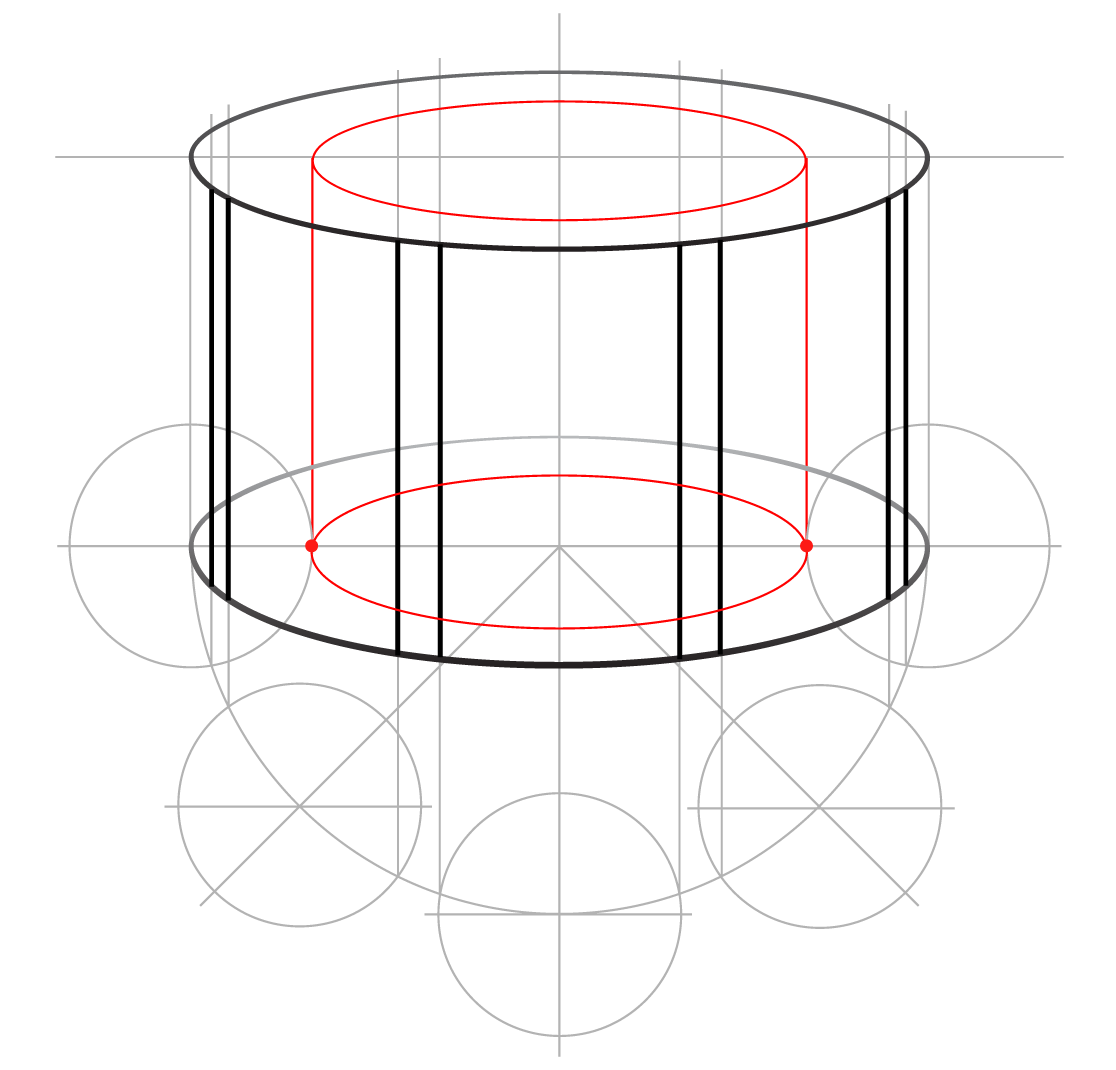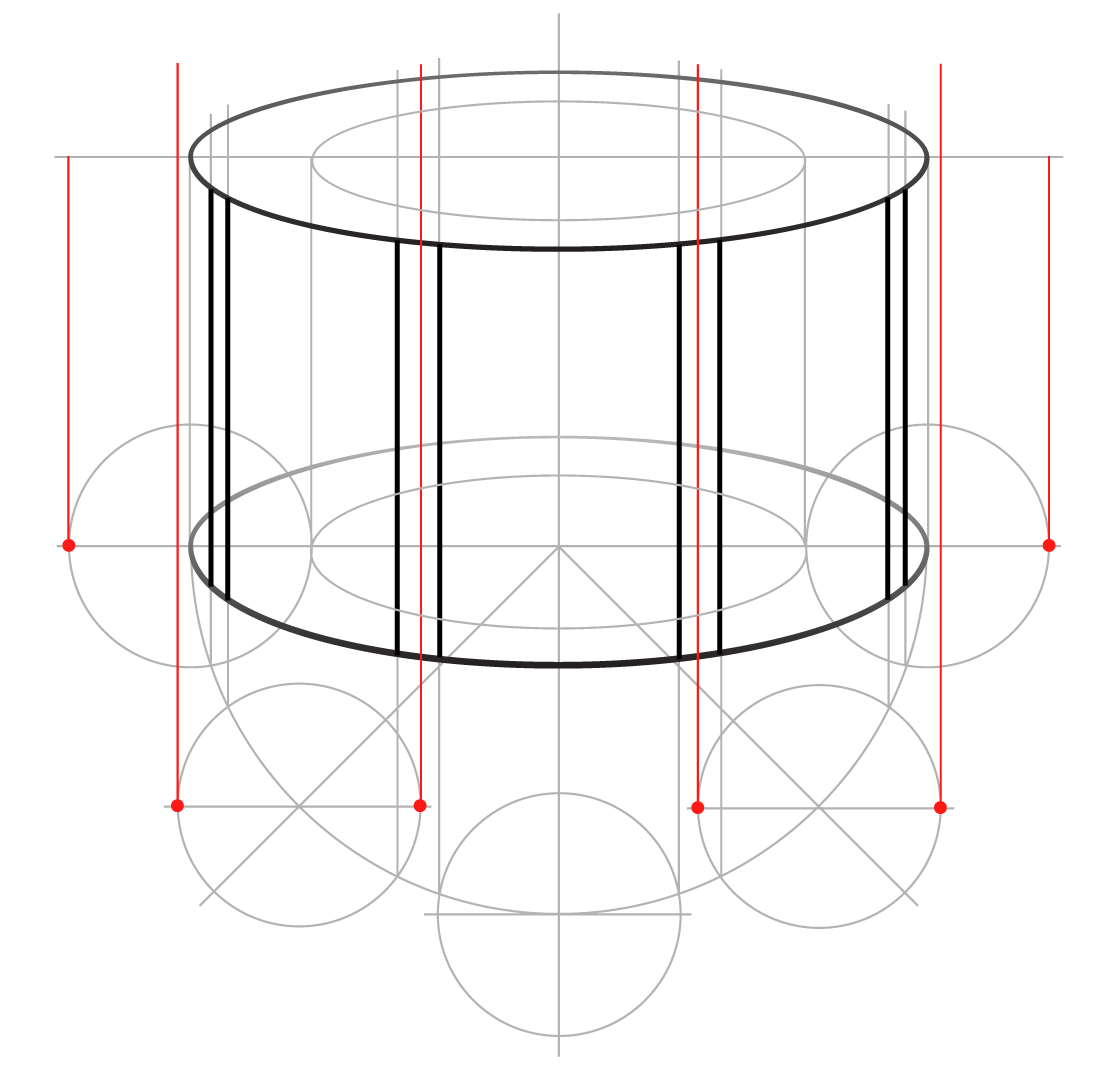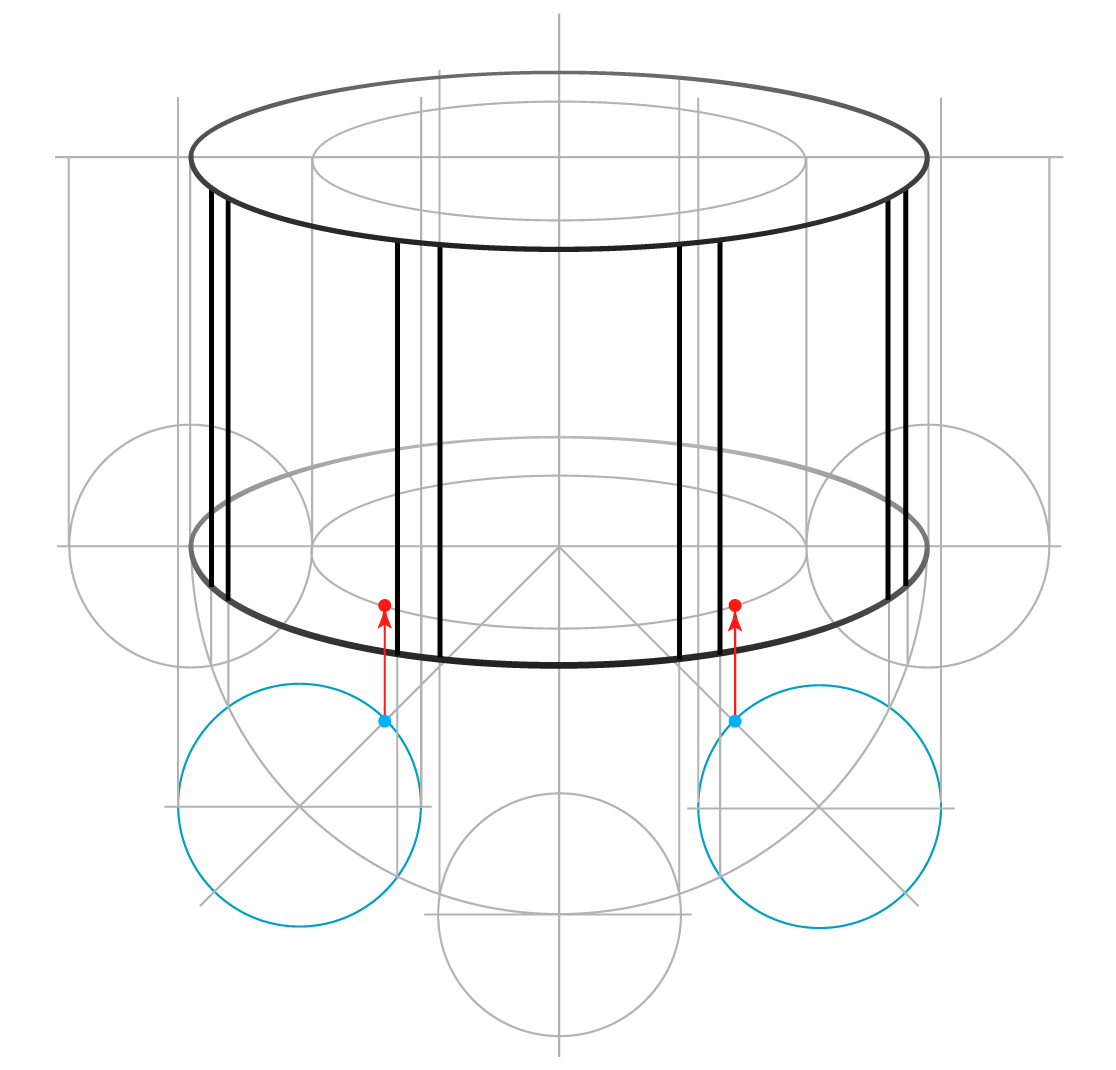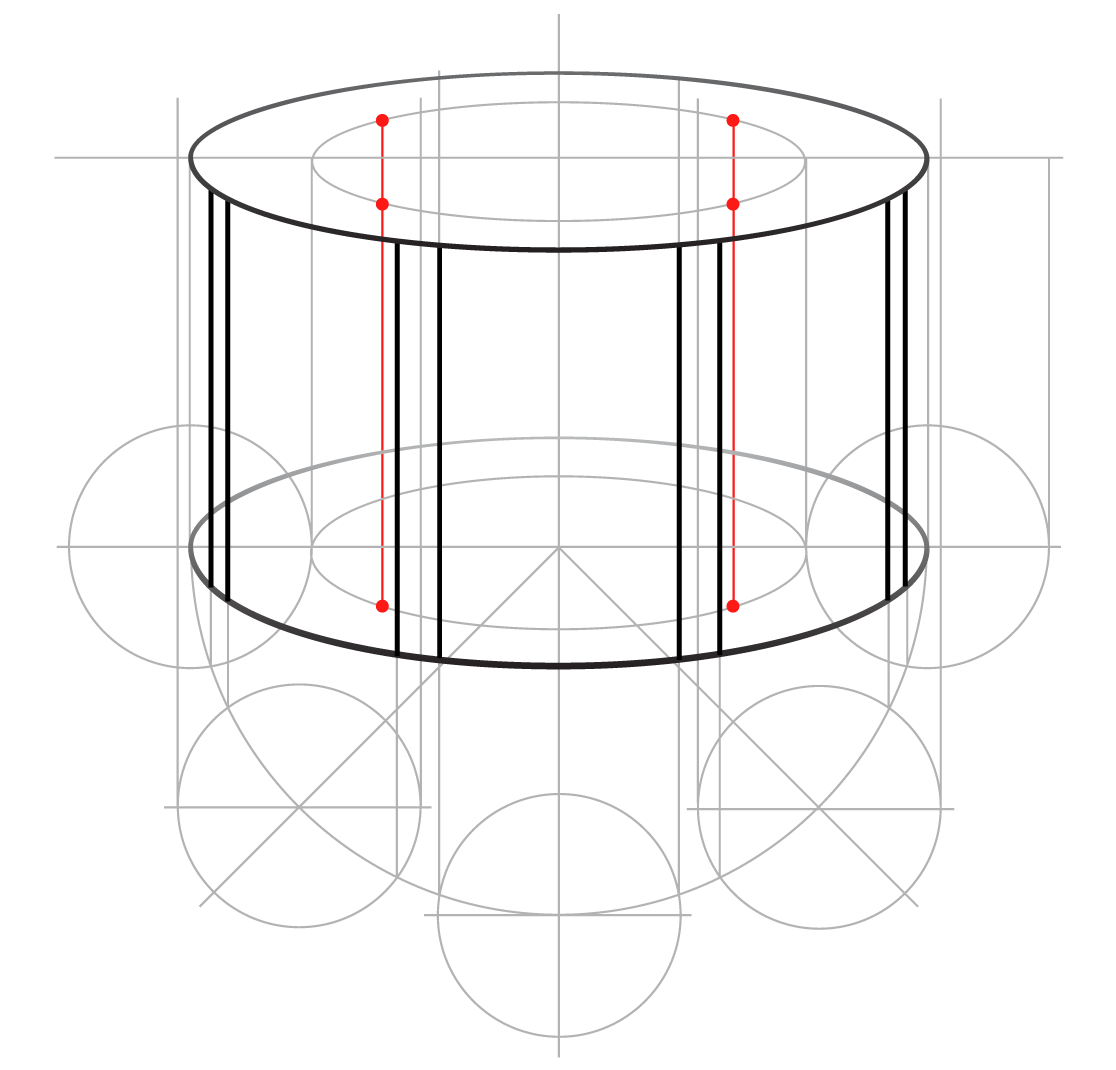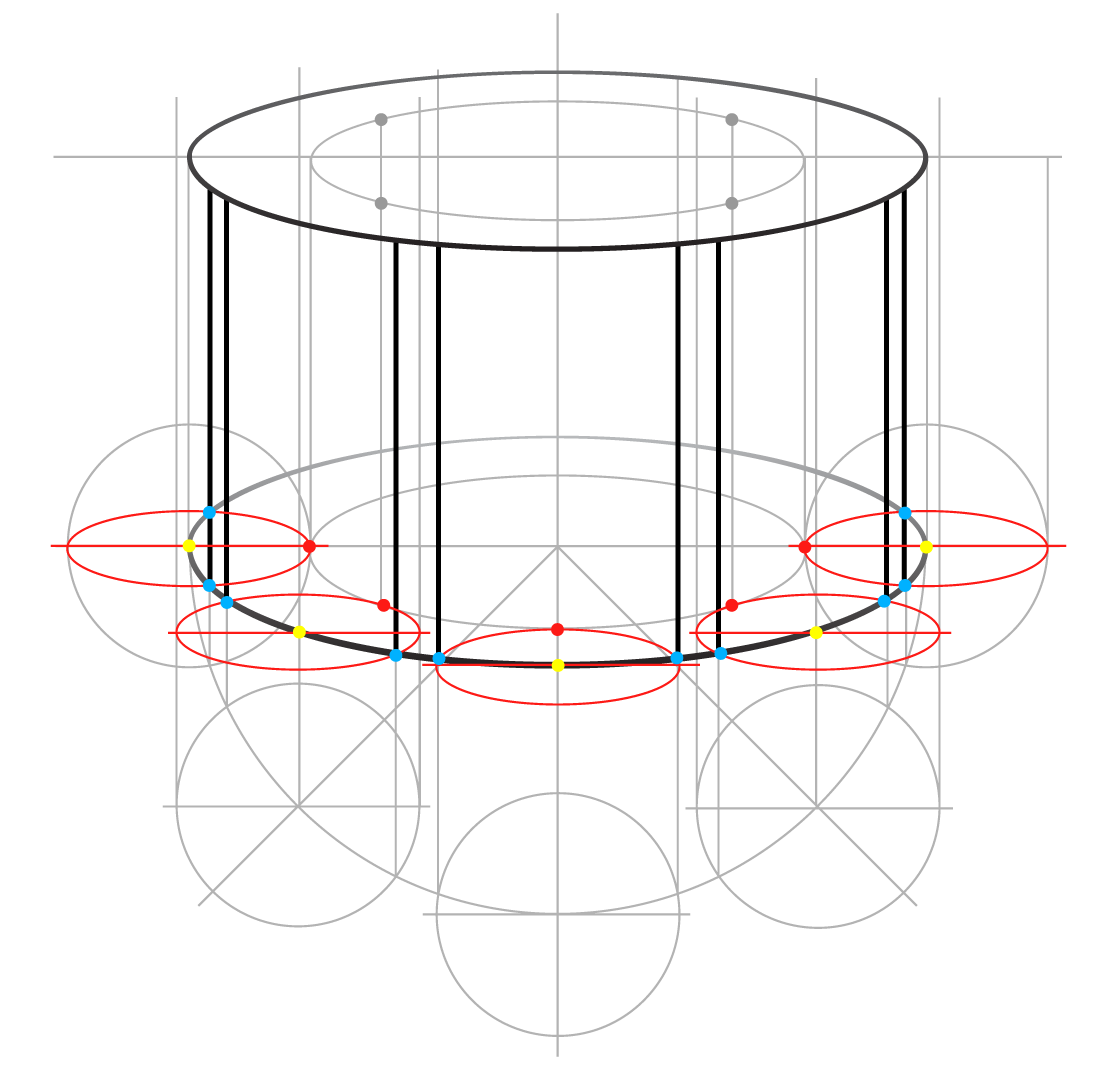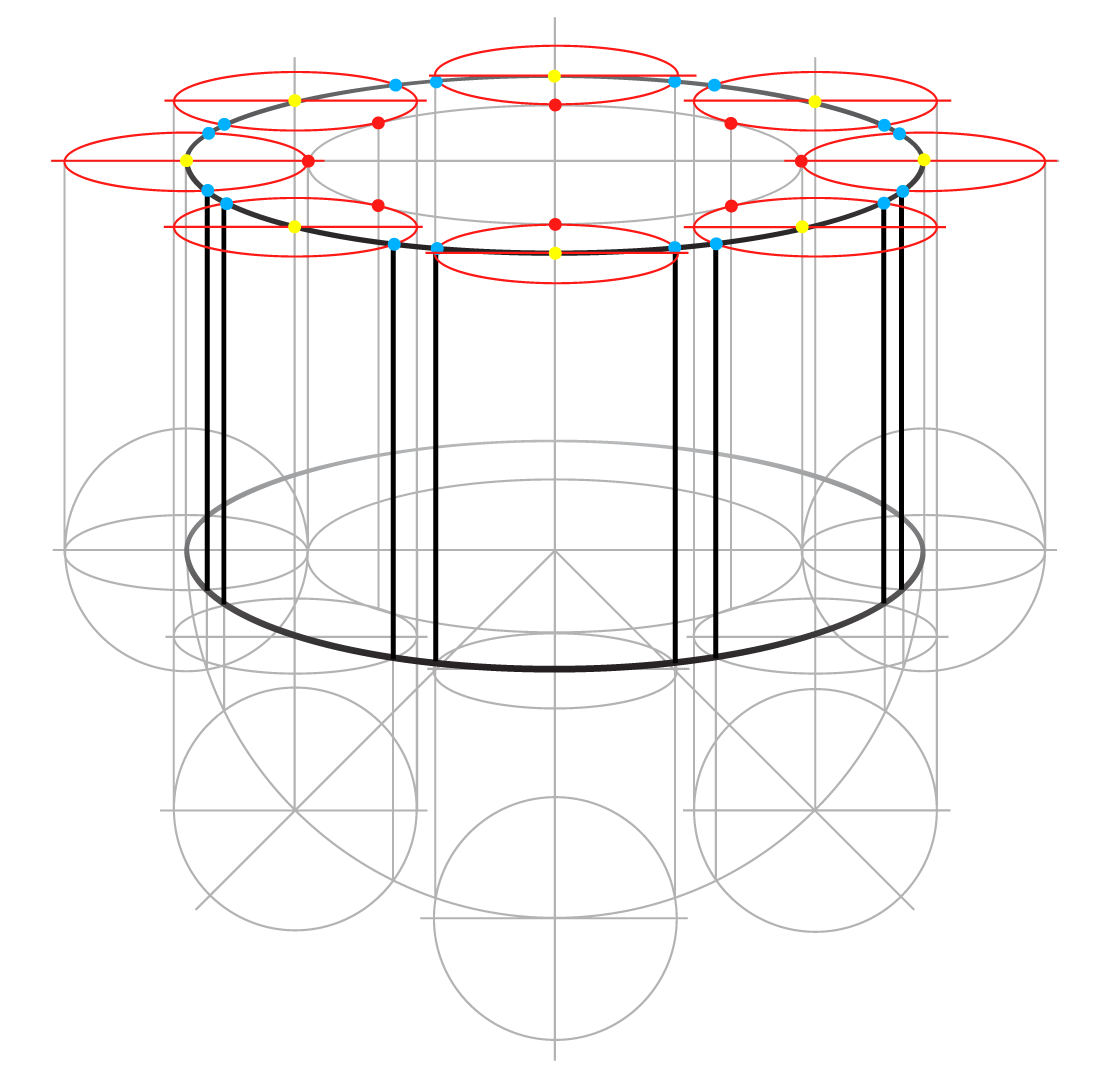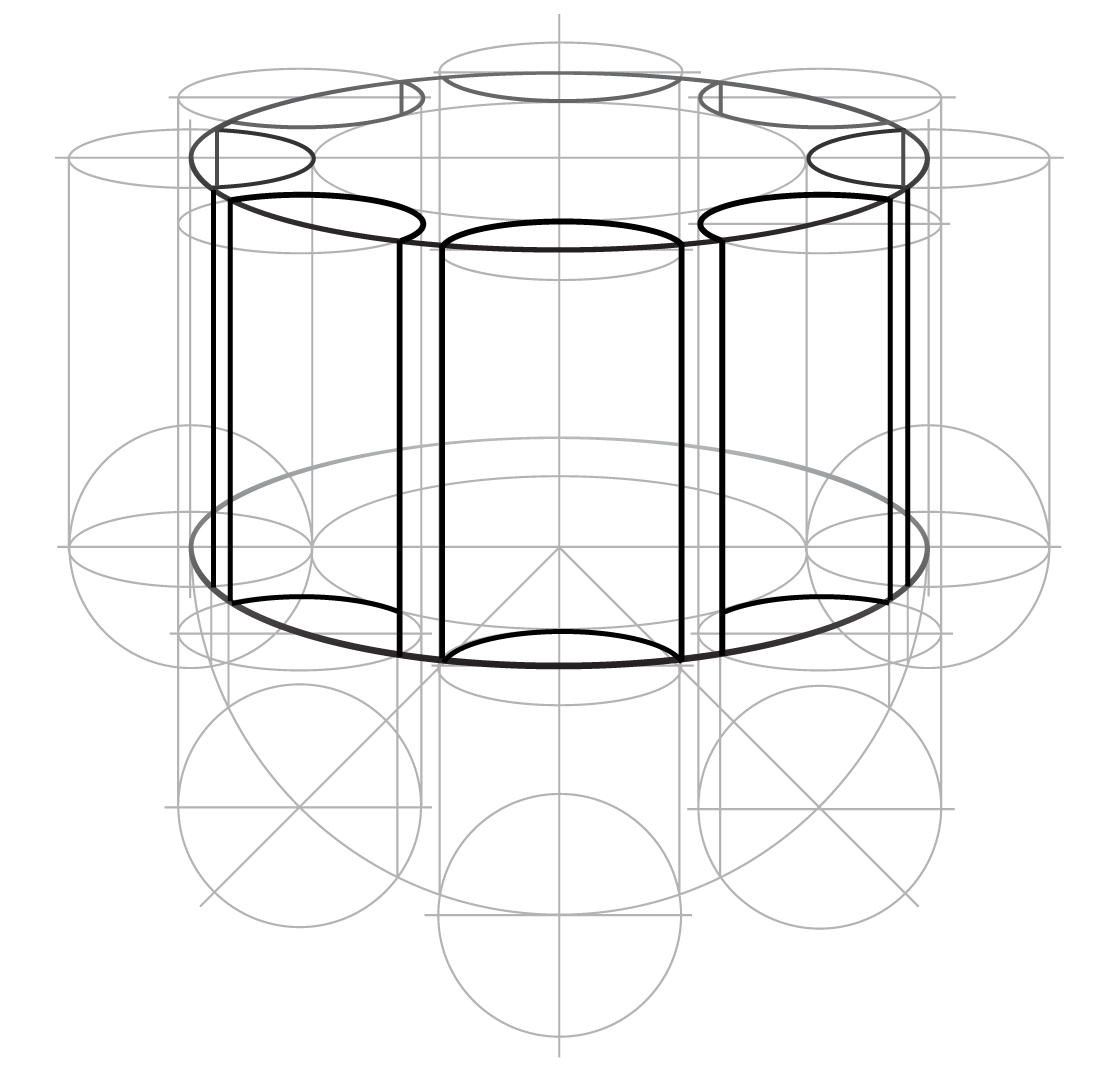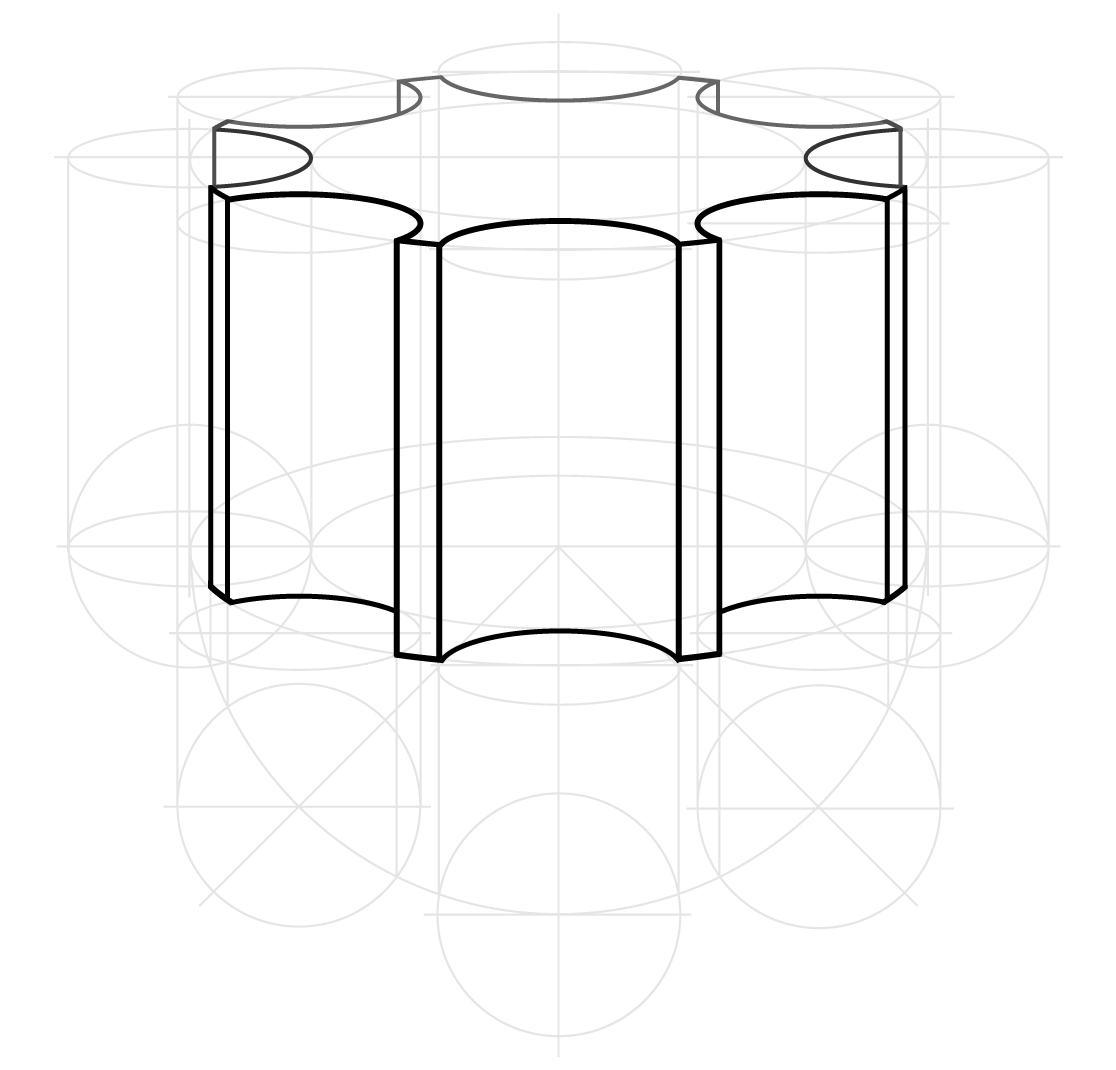How to Draw Intersecting Cylinders
In the history of arts, there are many examples of intersecting cylinders. Any fluted column has such geometry. Here, you will discover how to make a drawing of the cylindrical column segment.
Classical Orders of architecture usually have 20 to 24 flutes - the Doric Order has 20 flutes and Ionic and Corinthian - 24. However, for the purpose of this task, we will reduce the number of flutes to 8.
How to Draw a Fluted Column Step by Step
Design by Vladimir London
Step 1
Take A2 sheet of paper and draw with a ruler and compass the plan of a fluted column as illustrated below. You will use it as a model to draw ovals from life.
Place this sheet horizontally at some distance, so you see it in perspective. Arrange vertically a drawing board with the A2 sheet of drawing paper and make a drawing in graphite pencil, using the candle grip.
Step 2
Measure from life with a pencil the Height-to-Width ratio of the big circle that appears as an oval in perspective.
Check the video on How to measure relative proportions with a pencil
Draw a large oval approximately in the middle of your A2 sheet. Make sure this oval is symmetrical along two axes - the vertical axis of the column's shaft and the horizontal axis of the oval.
Apply the aerial perspective - the front half of this oval has to be bolder and darker and the remaining part - slimmer and lighter.
Step 3
Imagine that the first oval is the bottom plane of a column. Now, add some height to make a cylindrical segment of the shaft.
Although all classical columns are not strictly cylindrical, but have slightly curved bodies, we will approximate this segment as a cylinder.
Make sure that the bottom oval is fuller than the top one. Also, do not forget about aerial perspective.
Step 4
Add a semicircle to the bottom oval, so its width matches the oval.
You have to draw all lines freehand. It is not an architectural drawing exercise, but fine art drawing.
Divide the semicircle by two lines at 45 degrees. This will give four segments of a circle.
Step 5
Add five equal size small circles with uniform gaps between. These circles represent diameters of flutes.
Step 6
From the points where small circles cross the semicircle (red dots), draw vertical lines upwards. These lines indicate where vertical lines of the flutes are.
Draw those lines bold and strong for the visible edges of flutes and slim and light for invisible ones.
Step 7
From two points (red dots), draw two vertical lines upward to the horizontal axis of the top oval. These red lines indicate how deep two flues are carved inside the column.
Step 8
Draw two ovals that form a cylinder inside the column's shaft.
Each smaller oval has to be fully proportionate to the bigger one (have the same height-to-width ratio).
The virtual cylinder marked in red is the inner-boundary for all flutes.
Step 9
From red dots, draw vertical lines that mark widths of flute circles. This lines will define the edges of the flute ovals in perspective.
Step 10
Find dots (indicated in red) where two flutes (marked in blue) will touch the inner cylinder.
Step 11
Find four similar dots on the top plane.
Step 12
Draw five ovals of flutes at the bottom plane of the column's shaft.
Make sure that every small oval:
- Is equal in size to other small ovals.
- Is fully proportionate to the bottom big oval of the column's shaft, i.e. has the same height-to-width ratio.
- Has its center on the big oval line (yellow dots).
- Touches the inner cylinder (red dots).
- Crosses the big oval at the edges of flutes (blue dots).
- Has the main axis that is strictly horizontal (red lines).
- Is fully symmetrical along its big and small axes.
Step 13
Draw eight ovals of flutes at the top plane of the column's shaft.
Make sure that every small oval:
- Is equal in size to other small ovals at the top.
- Is fully proportionate to the top big oval of the column's shaft, i.e. has the same height-to-width ratio.
- Has its center on the big oval line (yellow dots).
- Touches the inner cylinder (red dots).
- Crosses the big oval at the edges of flutes (blue dots).
- Has the main axis that is strictly horizontal (red lines).
- Is fully symmetrical along its big and small axes.
Step 14
Make all visible lines of the flutes bolder and darker.
Step 15
You may slightly erase all invisible and helping lines, leaving all visible lines bold and strong.
Also, work on the aerial perspective, making sure that those lines that are closer to a viewer are bolder and darker, and those lines further away are slimmer and lighter.
A skilful fine artist needs to know how to draw constructively not only to depict some cylinders or columns. This knowledge allows to understand a human body construction and draw proportionate and realistic portraits and figures from life, memory and imagination.
To your creative success,
Vladimir London
Art tutor
To learn good drawing techniques, enroll in the Life Drawing Academy course:
Online Course
A self-study, self-paced course for you to learn fundamental methods of classical drawing and improve life drawing skills by watching video lessons and doing assignments
- Unlimited access to 52 life drawing video lessons
- Lifetime membership without deadlines
- Unlimited support from the Academy tutors
- Constructive critique of your artworks
- Member access to the Academy's Art community
- Place in the Academy's Students Gallery
- Exclusive members-only newsletter and bonuses
- Life Drawing Academy Diploma of Excellence in your name
One-time payment - Lifetime membership
$297 USD
ENROLL NOW
Personal Tutoring Online + Online Course
The ultimate choice if you who would like to receive personal, one-to-one tutoring from the Academy teachers, which is custom-tailored to your skills and needs
- Everything in Online Course, plus:
- Dedicated team of art tutors
- Assessment of your current level of drawing skills
- Personalized curriculum tailored to your skills and goals
- Up to 100 drawing tasks with by-task assessment
- Unlimited one-to-one personal coaching with detailed per-task instructions and feedback
- Artwork critiques and results-oriented guidance
One-time payment - Lifetime membership
$997 USD
ENROLL NOW


